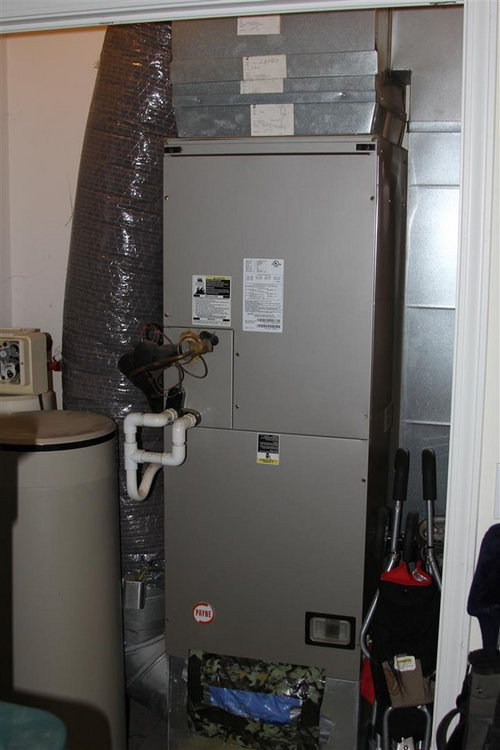Heat pump/electric furnace question
flyin_lowe
9 years ago
Related Stories

FLOORSWhat to Ask When Considering Heated Floors
These questions can help you decide if radiant floor heating is right for you — and what your options are
Full Story
FLOORSIs Radiant Heating or Cooling Right for You?
Questions to ask before you go for one of these temperature systems in your floors or walls (yes, walls)
Full Story
MOVINGHiring a Home Inspector? Ask These 10 Questions
How to make sure the pro who performs your home inspection is properly qualified and insured, so you can protect your big investment
Full Story
BATHROOM DESIGNWarm Up Your Bathroom With Heated Floors
If your bathroom floor is leaving you cold, try warming up to an electric heating system
Full Story
FLOORSFloors Warm Up to Radiant Heat
Toasty toes and money saved are just two benefits of radiant heat under your concrete, wood or tile floors
Full Story
HOUSEKEEPING5 Steps to Improve Your Heating System Now
Increase your heater's efficiency and safety for lower energy bills and greater peace of mind this winter
Full Story
GREEN BUILDINGHouzz Tour: Passive House in Vermont Slashes Heating Bills
Its ecofriendly, low-maintenance design leaves a family with more time to relax and enjoy the weekend home
Full Story
GREAT HOME PROJECTSHow to Add a Radiant Heat System
Enjoy comfy, consistent temperatures and maybe even energy savings with hydronic heating and cooling
Full Story
GREEN BUILDINGInsulation Basics: Heat, R-Value and the Building Envelope
Learn how heat moves through a home and the materials that can stop it, to make sure your insulation is as effective as you think
Full Story
REMODELING GUIDESConsidering a Fixer-Upper? 15 Questions to Ask First
Learn about the hidden costs and treasures of older homes to avoid budget surprises and accidentally tossing valuable features
Full StorySponsored
Franklin County's Preferred Architectural Firm | Best of Houzz Winner
More Discussions








flyin_loweOriginal Author
tigerdunes
Related Professionals
Cocoa Beach Solar Energy Systems · Compton Solar Energy Systems · Imperial Beach Solar Energy Systems · Paramus Solar Energy Systems · Chattanooga Home Automation & Home Media · North Merrick Home Automation & Home Media · Plantation Home Automation & Home Media · Potomac Home Automation & Home Media · Richardson Home Automation & Home Media · Valle Vista Home Automation & Home Media · West Palm Beach Home Automation & Home Media · Windsor Locks Home Automation & Home Media · Framingham Center Electricians · Evergreen Park Fireplaces · La Palma Fireplacesflyin_loweOriginal Author
dadoes
klem1
flyin_loweOriginal Author
dovetonsils
countryboymo
flyin_loweOriginal Author
tigerdunes
mike_home
flyin_loweOriginal Author
flyin_loweOriginal Author
dovetonsils
flyin_loweOriginal Author
tigerdunes
mike_home
newtalk
sktn77a
countryboymo